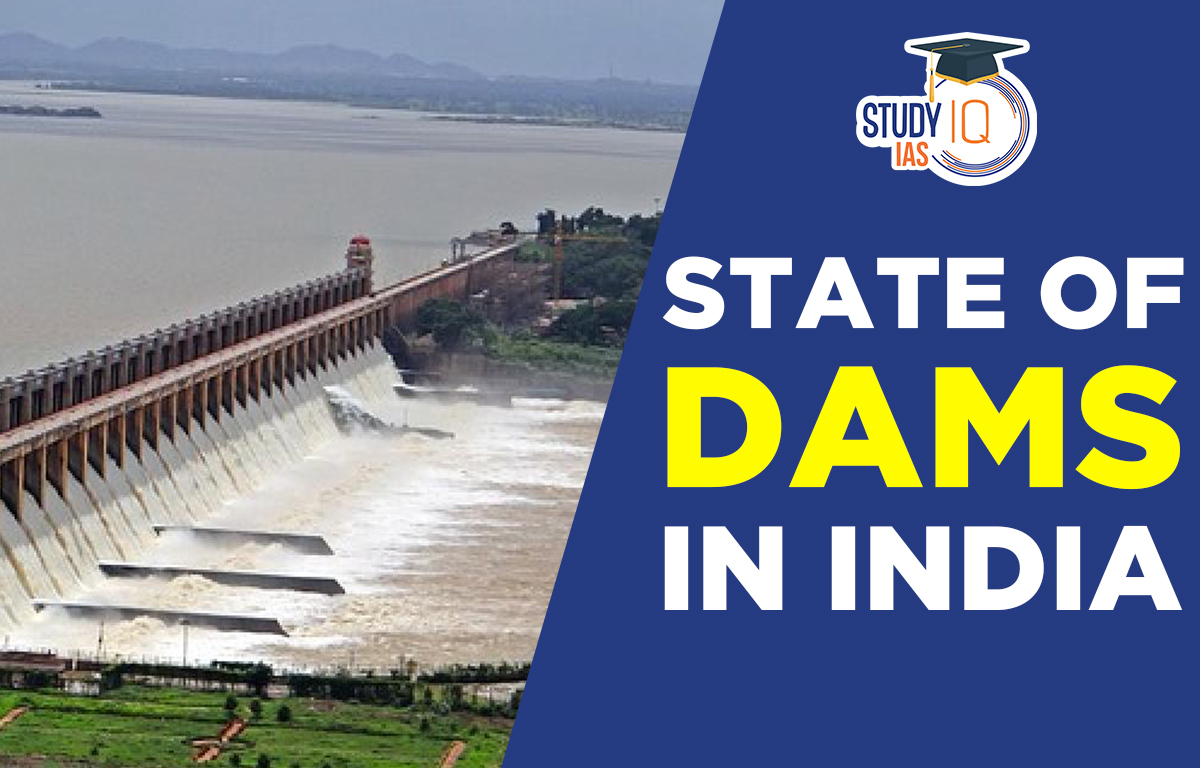Table of Contents
Gandhi Sagar Dam
- Gandhi Sagar is a masonry dam that was constructed in 1960 to provide drinking water to several areas of Rajasthan and Madhya Pradesh, and generate 115 megawatts of electricity.
- It is one of the four major dams built on Chambal River. It is also one of the five water reservoirs of national importance.
- Issues with the dam:
- Absence of regular checks, non-functional instruments and choked drains are the main problems faced by the dam.
Chambal River
- Chambal is a perennial river flowing through the states of Madhya Pradesh, Rajasthan and Uttar Pradesh.
- It is a right-bank tributary of Yamuna river. It originates on the south slope of the Vindhya Range in Madhya Pradesh.
- The river drains a semi-arid zone of north-western India. The vegetation consists of thorn forest, indicating low rainfall.
- Tributaries: Banas and Mej rivers are left-bank tributaries. Parbati, Kali Sindh and Shipra are right-bank tributaries.
- The National Chambal Sanctuary lying on the tri-junction of of Rajasthan, Madhya Pradesh and Uttar Pradesh hosts species such as critically endangered gharial, the red-crowned roof turtle and the Endangered Ganges river dolphin.
Highlights of the Report
| Categorization | Category I: Dams having major deficiencies, which may lead to complete failure/partial failure and need immediate attention.
Category II: Dams with minor to medium deficiencies, which can be rectified but need immediate attention. Category III: Dams are safe and no deficiency in normal operation. It also includes those that may need some kind of maintenance work for upkeep and to ensure safety. Category IV: Dams are safe under all considerations and condition of operations. |
| Benchmarks | Central Water Commission’s (CWC) guidelines for dam safety, State Dam Safety Manual, DSO Inspection Reports
Madhya Pradesh Works Department Manual (MPWDM), Scheme guidelines for funding and maintenance, WRD specifications, etc. |
| Important findings | Inspections: There were no pre and post-Monsoon inspections and reviews of dams. State Dam Safety Organization did not inspect required number of dams.
Lack of staff: There were no sufficient staffs deployed at the ground level for the purpose of regular monitoring of dams. Database preparation: No database of small dams in the state was prepared. Requisite design drawing of dams was not carried out. Lack of remedial measures: Deficiencies reported by the SDSO and other authorities have not been addressed by the concerned dam authorities, by initiating appropriate remedial measures. Non-functional instruments: Instruments of many large dams were fully or partially non-operational. This has affected the ability to predict water flow and stress. |
Issues with India’s Dams
- Decreasing capacity: Many dams in the country are heavily silted, affecting their storage capacity. During heavy inflows, they are forced to discharge water to downstream areas.
- Reduction in storage capacity has affected power generation and irrigation capacity of the dams.
- Changing hydrology: Change in monsoon patterns has affected hydrology of the region. Water availability in river basin has been affected.
- Lack of maintenance: Many dams are not regularly maintained. The outdated equipments and instruments have not been replaced.
Related Initiatives: Dam Safety Act, 2021
- The bill provides for the surveillance, inspection, operation, and maintenance of all specified dams across the country.
- The bill sets up National Committee on Dam Safety and the National Dam Safety Authority to regulate dam operations in the country.
- The State Dam Safety Organization (SDSO) will be responsible for surveillance, inspections and monitoring the operation and maintenance of specified dams.
Comptroller and Auditor General (CAG)
- The CAG of India is the supreme audit institution of India, set up under Article 148 of the Constitution of India.
- Functions: The office is empowered to audit all receipts and expenditure of the Government of India and the State Governments, including those of autonomous bodies and corporations financed substantially by the Government.
- Service period: The CAG holds the position till the age of 65 years or 6-year term, whichever is earlier.
- Removal: CAG can be removed only on an address from both houses of parliament on the ground of proved misbehavior or incapacity.


 Daily Quiz 17 April 2025
Daily Quiz 17 April 2025
 Nilgiri Biosphere Reserve, Map, Climate,...
Nilgiri Biosphere Reserve, Map, Climate,...
 Complete List of Indian State Animals
Complete List of Indian State Animals





















